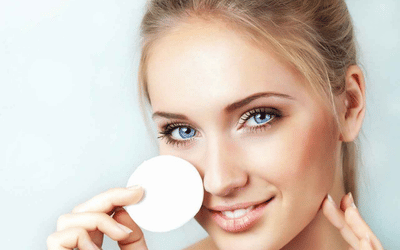Not a day goes by without a new makeup product hitting the shelves. On one side, there are stylishly packaged cosmetic products offering various solutions. On the other, there are cleansers waiting at the ready to remove the traces of these products at the end of the day. In this battle, one team clearly takes the lead; almost every woman has gone to bed without removing her makeup at least once. This bad habit, which paves the way for skin aging and acne problems, poses even greater risks when it comes to eye makeup. We gathered information from Kudret Eye Istanbul ophthalmologist Dr. Deniz Oygar Baylançiçek about the damage poorly removed makeup can cause to the eyes and what to consider when choosing makeup products.
Healthy Eyes Are Beautiful Eyes!
Dr. Deniz Oygar Baylançiçek of Kudret Eye Istanbul explains: “Modern life’s biggest challenge is time management. With so much to do in 24 hours, including basic needs like sleeping and resting, especially we women often neglect our own needs. One of the most common mistakes is going to bed without removing eye makeup or doing so carelessly. Unremoved mascara, eyeliner, and eye pencils can speed up the growth of bacteria and viruses, leading to blepharitis, or inflammation of the eyelids. The eye infection commonly known as a stye occurs when the base of the eyelashes becomes inflamed. A stye is a pus-filled abscess that manifests with pain, redness, itching, stinging, and swelling. Styes thrive in unclean environments and when the body’s immunity is low. It is important to consult an eye specialist without waiting for it to go away on its own. An untreated stye is likely to recur. Using expired makeup products or sharing them with others can also invite infections and styes. Additionally, not removing eye makeup properly poses aesthetic risks, such as mascara residue damaging, breaking, and causing eyelashes to fall out. Remember, healthy eyes are beautiful eyes. Always make time for yourself!”
How to Properly Remove Eye Makeup?
Dr. Deniz Oygar Baylançiçek offers the following tips for removing eye makeup:
-
Use products that match the pH of your tears.
-
Gently and softly clean your eyes without pressing too hard and irritating the skin.
-
Avoid getting the product into your eyes.
-
Clean your eyelids from the inner corners outward, not from top to bottom.
-
Ensure the cleanliness of your makeup removal pads. Instead of soaking one pad with a lot of cleanser and reusing it, use less product on a fresh pad each time.
-
Use separate pads for each eye to prevent transferring any existing infection from one eye to the other.
-
Always remember the miraculous effect of water on our bodies and skin. Wash your face after removing your makeup and after waking up in the morning, and dry with a clean, soft towel or paper towel. Do not use the same towel you use for your hands. Your towel should be personal; do not share it with others.
-
If you wear contact lenses, remove your lenses before cleaning your makeup.
Tips for Using Makeup Products Safely:
Dr. Baylançiçek also provides tips for the use of makeup products to ensure eye health:
-
Do not share makeup products with others. Each person’s body carries different bacteria. That person could also have an eye infection or another illness. By sharing makeup products, you might also share bacteria and infections.
-
If you experience allergic reactions such as itching or redness, stop using the product and consult a specialist.
-
Do not use the same products for too long. Bacteria thrive in dark, moist places like your mascara tube or makeup sponge. Continuously using the same products invites bacteria. Replace your products at regular intervals.
-
Make sure the safety seal of purchased products is intact.
-
Check the expiration date after opening the product. The packaging will indicate how long it can be used after opening. Note the date you opened it or set reminders on your phone or computer for the expiration date.
-
Even if the product is not expired, stop using it if you notice any changes in smell, colour, or texture.
-
If you wear contact lenses, apply your makeup after putting in your lenses.
-
Maintain the cleanliness of your brushes and sponges.
-
Do not add water to your makeup products to alter their consistency, as this can cause bacterial growth.
-
Wash your hands and face before starting to apply makeup. Dust and germs can reside on your skin, which can accidentally get into your eyes. Washing your hands and face removes many of these unwelcome visitors.
-
Do not apply eye makeup while in a moving vehicle. Sudden movements from bumps, potholes, or braking can cause you to lose control of your hand, leading to injuries to your eyes, eyelids, or the surrounding area.
-
Do not wear makeup if you have an eye infection. Once healed, replace your makeup products, as the germs causing the infection could have contaminated them. Continuing to use the same products increases the risk of reinfection.
-
No matter how rushed you are, apply makeup carefully. Products like eyeliners, mascara, and eyelash curlers can pose risks to your eyes if used without caution.
Remember, these blog posts are for informational purposes only. If you have any medical concerns or questions, please consult a doctor.




